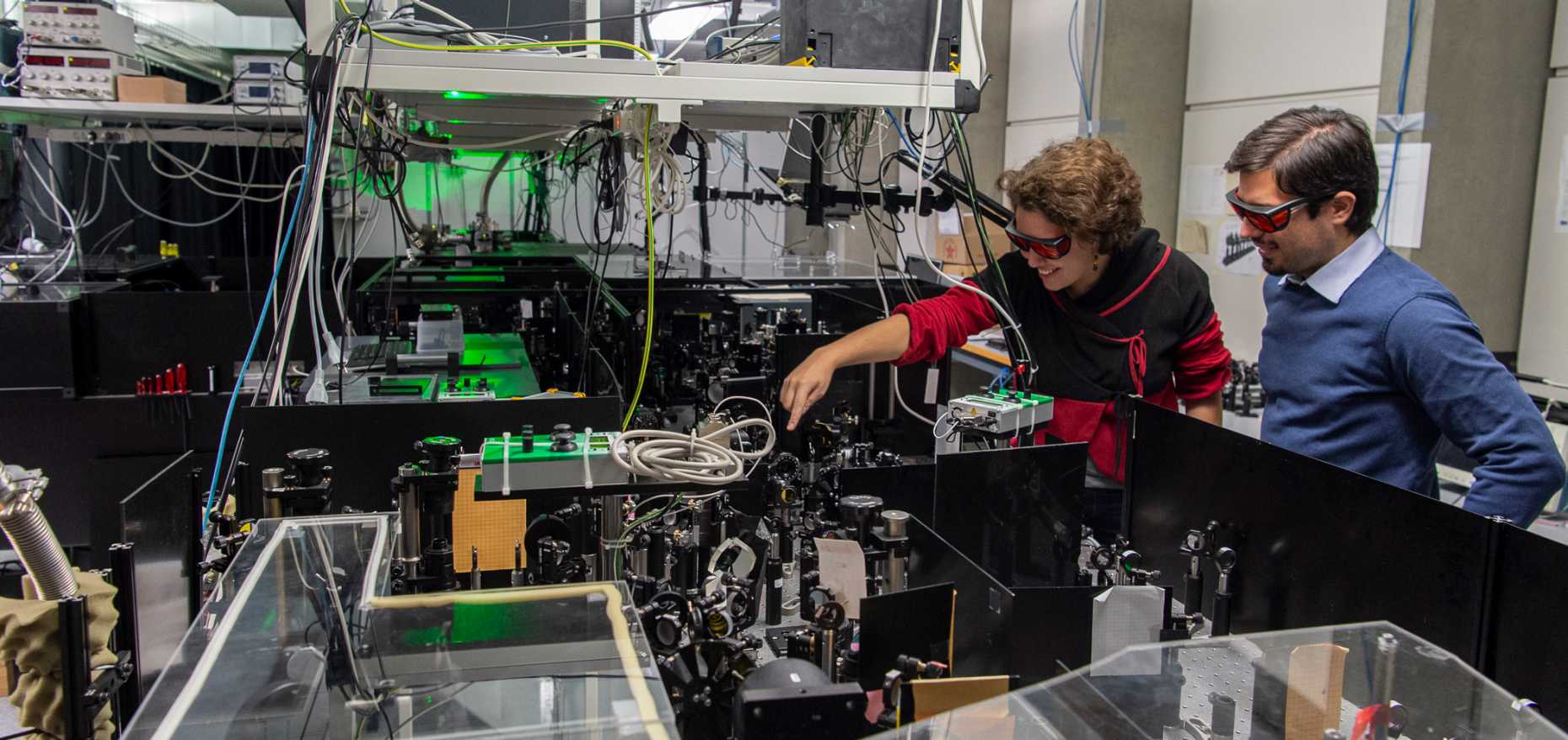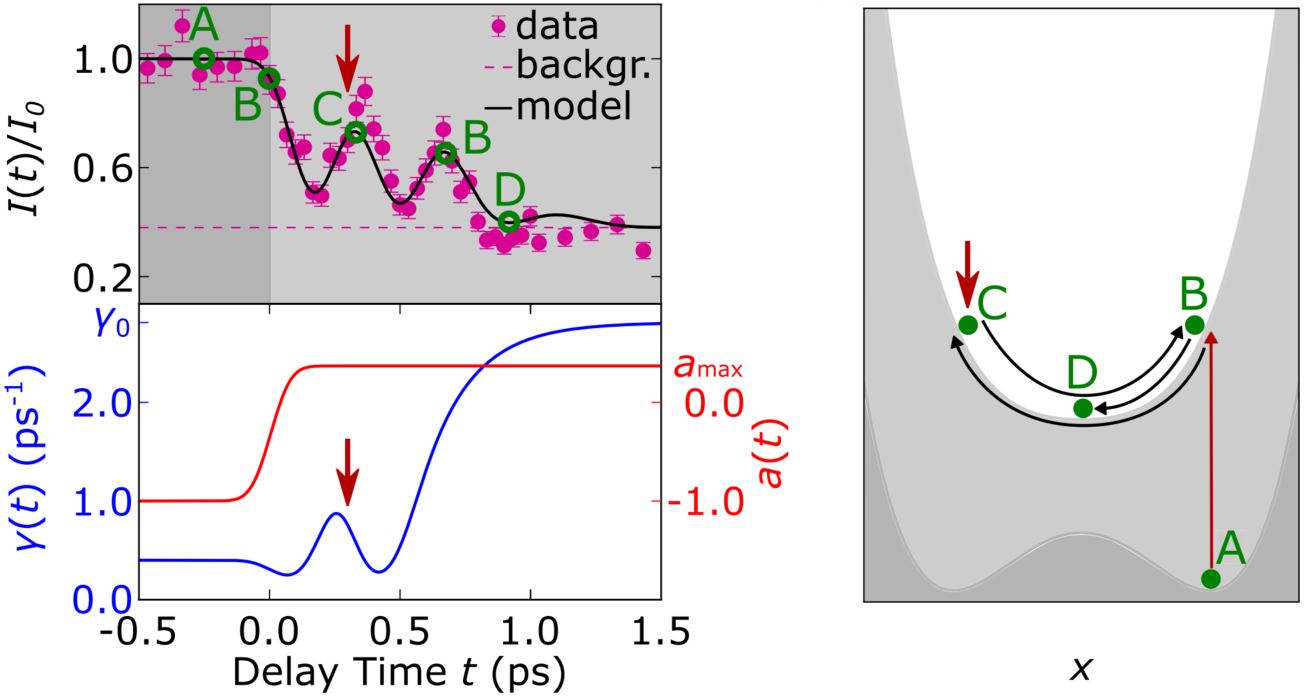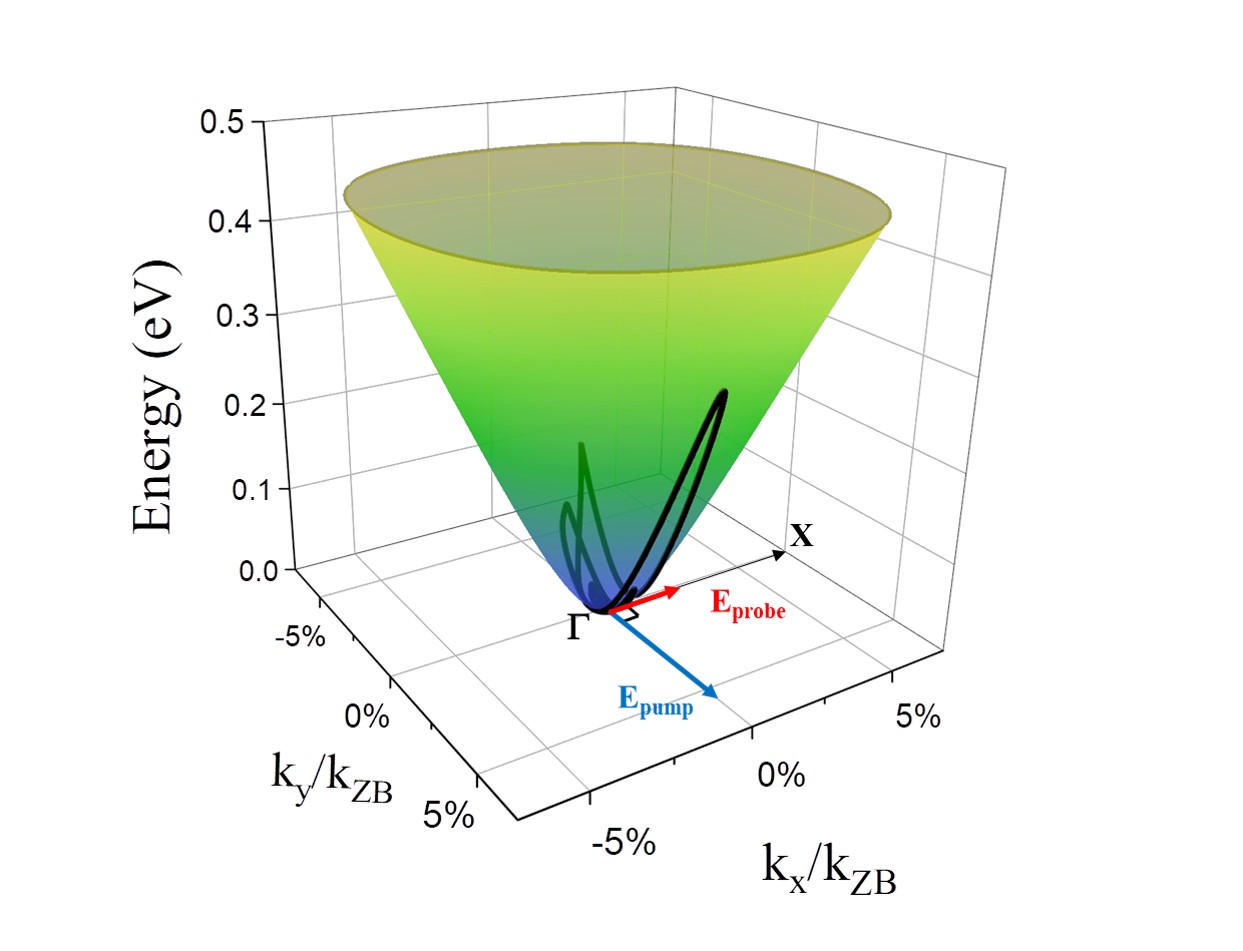Research
The research of the group focuses predominantly on understanding and controlling the structure and related properties of solids using strong perturbations from thermal equilibrium.

Exploring nonlinear couplings in condensed matter systems
One major focus of the group is using coherent excitations induced by intense pulses of light to drive nonlinear dynamics of the atomic structure in solid-state materials. This is accomplished by tailoring the character of the light pulses to create large amplitude coherent dynamics that then couple to other dynamics, in many cases leading to highly nonlinear phenomena such as phase transitions or switching of ferroic order parameters. Below are several different active projects connected to this activity.
Nonlinear phononics and phase transitions
When tuned to frequencies in the mid-infrared or THz range, electromagnetic radiation can resonantly drive certain vibrational modes in sold-state materials. When the light is intense enough, the resulting vibrational motions can be large enough to couple significantly to other vibrational modes and induce a coherent response, a phenomenon called nonlinear phononics that serves as an analog of nonlinear optics. We are interested in systematically exploring the potential of nonlinear phononics for inducing structural phase transitions in the electronic ground state, via coherent manipulation of the normal vibrational modes to extremely high amplitudes. This method holds promise for ultrafast manipulation of structures with minimal generation of entropy, and has the potential for novel applications using more efficient schemes of laser-driven manipulation of structural order.
Contact: Matteo Savoini
Shaping THz and mid-IR pulses for optimal control schemes
In addition to studying the phenomenon of nonlinear photonics in specific materials, we are also investing into new methods to shape light pulses in the mid-IR and THz range to optimize the coherent processes we are interested in driving. We are adapting a method of generating narrow-band THz radiation to allow for precise control over the phase and frequency that could allow for more precise control over the coherent dynamics. We are specifically interested in applying this method to the study of spin-phonon coupling in magnetic materials, with an outlook for possible control applications.
Contact: Larissa Boie
Dissipation mechanisms of coherent dynamics near a phase transition

Near phase transitions in equilibrium, many materials experience a strong increase in the amplitude of fluctuations that are characterized (via the fluctuation-dissipation theorem) by strong dissipations. In so-called "ultrafast" phase transitions where the symmetry of a system suddenly changes, the role of dissipation is less clear. We are interested in using ultrafast methods to study the role and mechanisms of dissipation of coherences in systems that undergo ultrafast phase transitions. Tools include femtosecond x-ray scattering, multidimensional optical spectroscopy, and time- and angle-resolved photoemission spectroscopy.
Publications: external pageOptical control of vibrational coherence triggered by an ultrafast phase transition (2019)call_made ,external pageCoherent Structural Dynamics of a Prototypical Charge-Density-Wave-to-Metal Transition (2014)call_made
Contact: Larissa Boie
THz-control of electrons and spins
In the group we are also interested more generally in using intense THz light to manipulate electronic and magnetic ordering. Below are several recently active directions that we are exploring.
2D THz spectroscopy of multiferroics
Multiferroics are materials that show simultaneously two different kinds of ferroic order parameter. Most current interest in multiferroics center on materials where ferroelectricity coexists with magnetic ordering. Some of these materials have excitations known as electromagnons, which are normal modes with both a structural and a magnetic (spin) component. We are interested in using 2D THz spectroscopy to study the coupling of electromagnons to other modes and to investigate their possible use in novel ferroic switching schemes.
Contact: Elsa Abreu
THz induced dynamics in Mott insulators
Mott insulators are archetypal examples of quantum materials. Strong interest in these systems has arisen due in part to the insulator-to-metal transition that some exhibit when the balance between on-site Coulomb repulsion and hopping is overturned via temperature, doping or, as more recently demonstrated, photoexcitation or the application of short electric field pulses. The transition driven by electric field has been studied in several types of materials such as chalcogenides, oxides and molecular crystals. In these compounds, an abrupt drop of electrical resistivity is observed under the application of electric fields for a few tens of microseconds. This occurs only for fields above a typical 1 – 10 kV/cm threshold. We are interested in investigating whether such processes could also be triggered using intense THz radiation on time scales of picoseconds.
Contact: Elsa Abreu
Exploring the conduction band with 2D THz spectroscopy

In semiconductors and semimetals, strong THz electric fields can induce a controlled coherent motion of the electrons in the conduction band, via ballistic excitation. In the first picoseconds after THz excitation, the nonlinearities induced by this coherent excitation prevail before more incoherent high field effects start dominating the nonlinear response. Disentangling these different nonlinear contributions with 2D THz spectroscopy, we follow the trajectory of the out-of-equilibrium electron population in low-bandgap semiconductors and other materals. We are able to extract information on the conduction band curvature and evaluate its anharmonicity and its anisotropy, close to the Gamma-point.
Publication: external page2D THz spectroscopic investigation of ballistic conduction-band electron dynamics in InSbcall_made
Contacts: Simone Biasco, Matteo Savoini
Control of superconductivity in spin-ladder compounds
Superconductivity in low dimensional spin ordered systems was theoretically predicted in 1992 and later observed experimentally for several spin-ladder compounds. We are interested in exploring pathways for superconductivity in quasi-1D spin ordered ladder systems by a combination of photoexcitation and pressure.
Contacts: Janine Dössegger, Elsa Abreu
THz-control of ferroelectrivity
Ferroic materials are a class of materials which present a spontaneous moment along specific crystallographic axes, examples are ferroelectrics, ferromagnets and ferroelastics. We are interested in new methods for the control of the ferroelectric polarisation state in materials using short THz pulses. Resonant excitations of structural phonon modes, enable us to induce sizeable modification of the spontaneous dipole moment.
Contacts: Vladimir Ovuka, Matteo Savoini
Typically these investigations are performed on table-top laser setups, with excitation wavelength ranging from the UV-visible part of the spectrum up to the far infrared, as well as at large scale facilities employing time-resolved hard X-ray techniques. Finally, efforts are also dedicated to explore THz field enhancement possibilities and alternative probing techniques such as phonon-mediated second harmonic generation.
